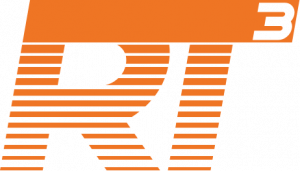By Jim Lichtenwalte, BuiltWorlds
Much to the fanfare of coffee-lovers everywhere, Starbucks will open a massive, 45,000 square-foot roastery in downtown Chicago next year. Formerly Crate & Barrel, it will be the largest Starbucks location in the world, and feature a staggering assortment of coffee, teas, and food.
And right around the corner from where that store is currently under construction, BuiltWorlds hosted its Chicago Projects Conference last month. In Loyola University’s Corboy Law Center, looking out at some of downtown Chicago’s most impressive structures, attendees learned how new construction technologies are changing job sites around the world, and revolutionizing the industry into something smarter, safer, and more interconnected.
Three of Chicago’s most exciting projects–the massive new Starbucks on Michigan Avenue, the renovation of the old Chicago Post Office, and the construction the 774,000 square-foot office space at 110 North Carpenter in the West Loop–were used as case studies illustrating just how far technology is pushing the built industry. The seven panels spanning the day-long conference covered, in great detail, the technology solutions currently in play in the AEC industry that are changing the way we build.
The conference opened with a keynote address by Sean Conlon, the president and co-founder of Conlon & Co. and the host of CNBC’s “The Deed Chicago.” A successful real estate developer and entrepreneur, Conlon walked the audience through his beginnings in Ireland, his journey to Chicago, and the successes and failures he’s had along the way. Conlon encouraged attendees to be bold and push forward.
“Pioneers often get shot in the back with arrows, not pilgrims,” he said.
Many innovative and technologically-driven practices are being used on large scale projects right here in Chicago. When designing the 110 North Carpenter office building (which now houses McDonald’s new corporate headquarters), Gensler utilized analytics and imaging software to create nearly 70 iterations of how to use the building site optimally and create a public space, before deciding on the design that was eventually chosen. The building is also now home to cutting-edge smart building technology in its lobby. Using a combination of key cards, turnstiles, and a 12-car elevator group, KONE created a more intelligent way to funnel people from the building’s entrance and to their offices.
“We wanted to see what we could do to help people get to their destination,” said Dan Brooks, KONE’s director of corporate sales.
In just about every office in America, a building’s occupants swipe their key cards to be admitted to the elevator bank, and then wait for their elevator along with a mishmash of other people destined for a variety of floors. The system KONE installed has the occupants of 110 North Carpenter equipped with smart key cards with data about their floor number. When swiping at the building’s turnstiles, users are assigned to an elevator with a group of people going to nearby floors. Brooks compared this change like moving from a bus to a taxi.
Similarly, ManufactOn and Skender are also two companies utilizing technology to change the industry. In their presentation, Tim Swanson, Skender’s chief design officer, Kevin Bredeson, Skender’s chief technology officer, and Raghi Iyengar, ManufactOn’s founder and chief executive officer, announced a formal, continuing partnership. ManufactOn is a platform that helps companies plan, track, and manage prefabricated projects. Moving forward, Skender will be using ManufactOn software to create modular construction projects. The three men see modular projects as a smarter way to build cities that is safer and uses less resources.
“About half the world’s resources we pull out of the ground we for buildings, and half the energy we use goes into buildings,” Swanson said. “Maybe there is a different way to do it. Maybe there is an alternative future, one does that doesn’t necessarily have to look like ‘Ready Player One.’”
Other panels examined the way technology is making construction sites safer places to work. Aiden Dalley, the product marketing manager of Viewpoint, David de Yarza, the CEO of Builderbox, Inc., and Daniel J. Klancnik, the director of project solutions Leopardo, detailed how interconnected technologies are making job sites safer and safer with each passing day. Using 360 cameras, job sites can be scanned and examined by superintendents for any safety issues.
“You now have the ability to make everybody on the jobsite with a cellphone a safety inspector,” De Yarza noted.
John Cahalan, the director of strategy at XOi, and Mark Schlander, vice president at GuardHat, Inc., discuss how their companies’ wearable products track workers’ locations, enable easier communications, and alert workers of dangerous conditions.
“Everyday 14 workers don’t come home from work,” Schlander said. “We make the invisible visible.”
The conference was capped off by the announcement of BuiltWorlds’ Project Technology Challenge winner, which was chosen by an experienced group of judges. Bobby Goodman, the co-founder of Truss announced Colas’ solar panel roadway as the winner of the competition. The project will line the existing surface area of roads with thin solar panels to produce more sustainable energy.
Moving forward, there is a lot to be excited about in the construction industry. If leaders keep pushing forward and striving for innovation as Conlon encouraged in the keynote, the built industry will certainly continue to become a safer, smarter place and yield amazing results.
Note: This first appeared on BuiltWorld’s website and can be viewed here.
